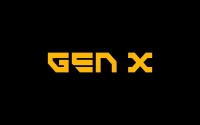CZ's "Unlucky Charm": Data or Just Dumb Luck?
CZ's Midas Touch... or the Opposite?
Changpeng Zhao, or CZ as he’s known, founder of Binance, publicly announced buying Aster (ASTR) tokens around $0.90 on November 2nd, 2025. What followed wasn't exactly a ringing endorsement for his investment acumen. The price jumped to $1.20, a monthly high, but then promptly cratered back to $0.90 within 24 hours. Then it kept falling.
The crypto community, ever the comedians, piled on with memes about CZ’s “reverse Midas touch.” CZ himself joked that he might be crypto's "unlucky charm," recalling past investments like Bitcoin at $600 (which then crashed to $200) and BNB in 2017 (which dropped 30% shortly after his purchase). He’s now vowed to keep his buys to himself. But is this just bad luck, or is there something else at play here?
Let’s look at the numbers. Aster is an upcoming perpetual DEX (decentralized exchange) platform with strategic backing from Binance. It’s positioned as a competitor to Hyperliquid in the decentralized perpetuals space. Aster boasts $10 billion in daily trading volume and $2.7 billion in open interest, numbers that trail Hyperliquid's $12 billion and $7.5 billion, respectively. They are sixth in total value locked (TVL) on Binance Smart Chain (BSC) with $531.4 million. So, it's a player, but not the dominant one.
The Whale in the Room
Here's where it gets interesting. Immediately after CZ’s post, an "anti-CZ whale" (as they’re being called) shorted Aster, racking up $21 million in unrealized profit as the price tanked to $0.82. This raises a few questions. First, how did this whale react so quickly? Were they already positioned, waiting for CZ to tip his hand? Second, who is this whale, and what's their motivation? Is it purely profit-driven, or is there a deeper game at play, perhaps an attempt to undermine Binance's influence in the DEX space?

Aster Trade recorded $262 billion in perpetual DEX volume in October 2025. Total trading volume across all decentralized perpetual exchanges hit a record $1.2 trillion that same month, a 62% increase from September. That’s a lot of volume, no question. But here’s the rub: concerns have been raised about potential wash trading inflating Aster's trading volume metrics. I’ve looked at these DEX volumes for years, and the velocity of trades on some of these platforms just doesn’t look…organic. (Forgive the subjective term, but sometimes the data just smells off).
Wash trading, for those unfamiliar, involves simultaneously buying and selling the same asset to create artificial volume and attract more users. If Aster's volume is artificially inflated, then its actual market position isn't as strong as the numbers suggest. And that makes CZ's endorsement look less like a savvy investment and more like…well, something else. Aster Trade: Rapid Growth and Controversy in the Decentralized Exchange Boom - Azat TV
The data on Aster’s performance is intriguing. It’s considered a key player in Binance’s future growth and a potential answer to Hyperliquid's dominance in decentralized perpetuals trading. But if those numbers are propped up by artificial activity, then the entire premise is shaky. Cross-chain integration and institutional compliance are emerging as key trends in the decentralized exchange sector. These are real, tangible developments. Inflated volume isn’t.
The Numbers Paint a Clear Picture
Ultimately, CZ's "unlucky charm" might not be luck at all. It might be a case of misplaced faith in potentially misleading data. The market reacted swiftly to his announcement, and a well-positioned whale capitalized on the subsequent price drop. Whether this was a coordinated attack or simply opportunistic trading remains to be seen. But one thing is clear: in the world of crypto, due diligence trumps even the most influential endorsements.
Or, as I like to say, trust the code, verify the volume.









